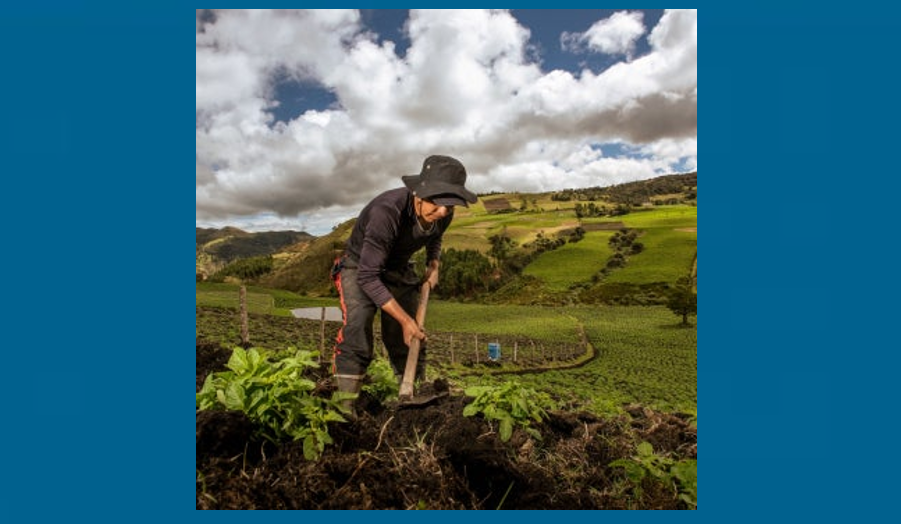The EAT-Lancet Commission on healthy, sustainable, and just food systems 2025 report and the FAO State of Food Insecurity and Nutrition in the World report, both recently released, have delivered a clear warning – the world’s food systems are failing both people and the planet.
Both reports hammer home the need for greater financing to transform food systems in a way that results in more affordable, nutritious food, widespread use of sustainable production practices, and improvement in the livelihoods of vulnerable smallholders and agri-SME workers. The reports highlight big-picture solutions like better government subsidies, cheaper wholesale finance for financial institutions to on-lend to the agriculture sector, and policy reforms. These are necessary areas to focus on, but they are not sufficient.
One area that receives less attention is the need for financial solutions at the “retail level”, meaning local financial institutions being able to provide adequate financial services that reach the farmers, agricultural small- and medium-sized enterprises (agri-SMEs), and other value chain actors who produce, transport, process, and market the food we consume. Local financial institutions play a critical role in making this happen.
Finance is flowing to some parts of the agricultural sector, but it’s not reaching those agricultural value chains and actors who need it the most to achieve the desired local food system transformation.
Here’s the catch: finance is flowing to some parts of the agricultural sector, but it’s not reaching those agricultural value chains and actors who need it the most to achieve the desired local food system transformation. For instance, actors along value chains producing highly nutritious food for local markets often lack access to the capital needed to adopt technologies that make nutritious food more affordable, sustainable, and beneficial to the livelihoods of smallholders and agri-SME workers.
CGAP’s new analytical framework proposes ways financial service providers (FSPs), development finance institutions (DFIs), donors, and agribusinesses can best promote the type of retail financial innovation needed to close this gap.
The finance gap holding back food systems transformation
Agriculture is notoriously hard to finance, especially for local FSPs. Risk is hard to assess due to unpredictable harvests, long waiting periods for returns, and increasingly volatile climate conditions – not to mention unique conditions for every value chain in different geographical regions.
Financiers may have experience serving high-value crops like coffee or cocoa for export, but have far less familiarity with assessing, for example, fruit and vegetable farmers serving local markets or startups building soil sensors or producing bio-fertilizers. This knowledge gap translates into a systemic financing gap for most local agriculture value chains, both in the quantity of funding and the suitability of existing financial products.
The numbers tell the story: ISF Advisors’ latest Rural and Agricultural Finance State of the Sector Report finds that over 70% of demand for smallholder finance – roughly USD 230 billion per year – is unmet. This is especially striking in Africa, where smallholders produce 70% of the continent’s food. In many cases, agribusinesses and other informal lenders step in to fill the gap left by formal financial institutions (e.g., in Sub-Saharan Africa, 25% of smallholder working capital is provided by agribusinesses, relative to 6% by the formal finance sector). However, this agribusiness finance comes at higher costs, shorter durations, and is limited to specific crops and types of inputs, limiting its effect on the desired food system transformation.
This massive financing gap is a symptom of a deeper problem: financiers aren’t offering inclusive finance – affordable, responsible financial products that are designed for the specific needs of actors in value chains with high-impact on nutrition, sustainability, and equity.
Targeting more impactful food security investments
Efforts to finance local food security have largely centered on investments in certain agricultural value chains (AVCs) — mainly cereals like wheat, maize, and rice — aimed at increasing productivity gains to boost the availability and affordability of calories. While these investments have been critical in addressing acute food insecurity globally, over time, they have also led to a relative underinvestment in other local AVCs of high nutritional value, like fruits, vegetables, pulses (beans and lentils), dairy, or poultry. This underinvestment has made these nutritious value chains less productive and, consequently, the food they produce is less affordable.
As a result, the local food processing industry tends to use the more affordable, highly caloric ingredients and less of the relatively more expensive, highly nutritious ingredients. In turn, this makes nutritious diets less affordable for everyone, especially for people living in poverty.
Models like IFPRI’s RIAPA and FAO’s MAFAP can help investors identify AVCs with higher impact on pressing food system transformation outcomes like affordable, nutritious food, sustainable outcomes, and improved livelihoods.
Investing in and scaling the adoption of those kinds of agtechs that boost nutrition, livelihoods, and sustainability is key to addressing today’s main challenges to global food security
Bottlenecks in these high-impact value chains vary depending on location and crop, but the good news is that entrepreneurs are designing localized agriculture technology (agtech) solutions in every market. Some of these agricultural technologies (agtechs) specifically address the constraints plaguing high-impact value chains. Investing in and scaling the adoption of those kinds of agtechs that boost nutrition, livelihoods, and sustainability is key to addressing today’s main challenges to global food security, as shown in examples below.
Customizing financial solutions for real needs
For agtechs to scale and for value chain actors to adopt their innovations, financial products need to solve for their specific needs. Financial innovation is needed at both retail and wholesale levels to make this possible.
As depicted in the figure below, meeting the needs of farmers – especially those in high-impact value chains – means rethinking how finance is offered at every stage of the financial supply chain.
FIGURE 1
Retail finance – the overlooked bottleneck
CGAP’s research shows that there is a strong focus on finding solutions to bottlenecks at the wholesale level. But far less attention is being paid to supporting local financial institutions to design internal systems that allow them to deliver tailored financial products that respond to the investments required in high-impact value chains. This could mean:
- Leveraging new data sets and satellite imagery to better manage production, market, and climatic risks in their portfolios
- Brokering partnerships with third parties in the agribusiness sector to reduce customer onboarding costs or distribute financial products more efficiently
- Offering loan tenures that align with crop cycles
- Setting repayment schedules that follow the harvest season
- Adjusting interest rates to reflect seasonal risks
- Bundling products like weather insurance
- Providing working capital, daily payment tools, or long-term debt for AgTech adoption
Take Eggoz, an Indian agtech that aims to solve poor egg quality in the domestic fresh egg value chain. By introducing strict quality management for smallholders and innovating its packaging technology and transport networks, Eggoz was able to improve farmers’ incomes and make fresh eggs more affordable for consumers. Retail lenders, unfamiliar with the model, remain hesitant to provide credit to farmers who want to adopt it, limiting Eggoz’ expansion among the vast number of smallholders in India. Furthermore, the existing loan products do not adapt to the tenure of investments.
This type of financial innovation at the retail level is absolutely key to addressing today’s pressing food security challenges. Wholesale finance innovations are still needed, and efforts to promote them should still be prioritized, but their impact will be limited if the retail finance bottlenecks are not solved.
The path forward: actionable guidance for FSPs and investors
CGAP’s big takeaway is that inclusive finance is a crucial component of any food system transformation effort. Without retail and wholesale financial innovation working in tandem, finance rarely flows into high-impact value chains or the key actors within them (especially agri-SMEs and smallholders, who are mostly women). CGAP’s framework translates these lessons into actionable guidance for FSPs, DFIs, and impact investors:
- Local FSPs and impact investors should invest in staff, IT, and research and development to design systems and tailored products that viably increase their exposure to high-impact value chains.
- DFIs can offer more flexible wholesale financing to allow for innovations at the retail level.
- Donors can catalyze innovation through grants, digital infrastructure, and business development support for agtechs’ adoption in high-impact value chains.
CGAP will spend the next two years testing these approaches and sharing lessons regarding what works. To learn more, sign up for our upcoming webinar.



